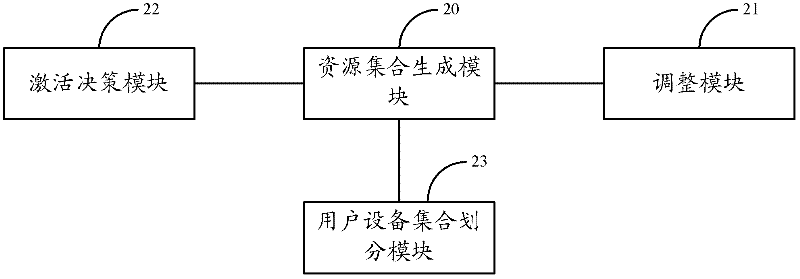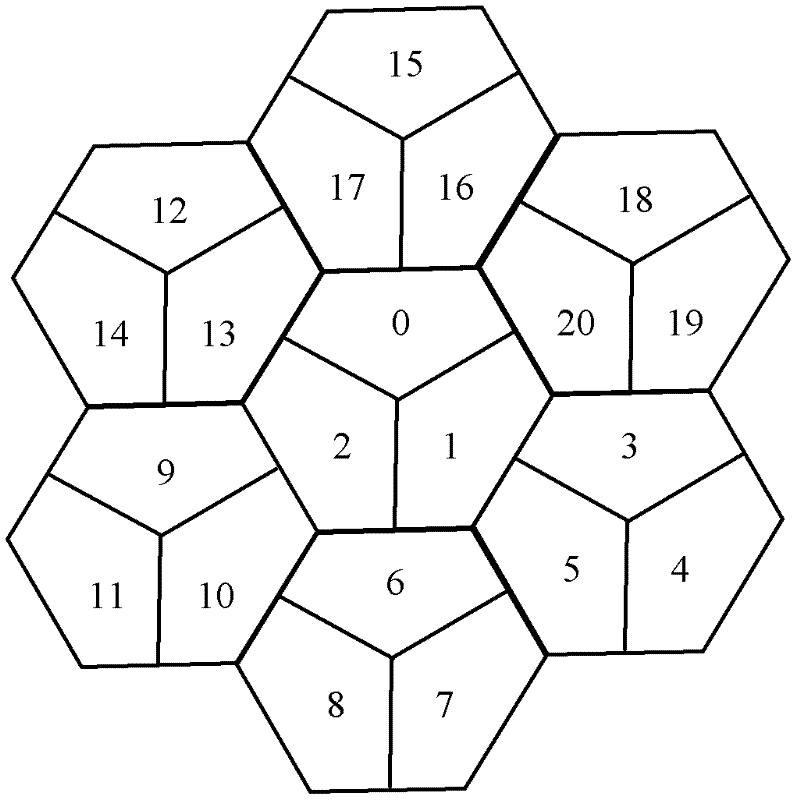Method for sending PDCCHs (Physical Downlink Control Channels) and equipment for sending PDCCHs
A technology of equipment and user equipment, applied in network traffic/resource management, electrical components, wireless communication, etc., can solve problems such as strong interference between cells in the downlink control area, and achieve the effect of improving coverage performance
- Summary
- Abstract
- Description
- Claims
- Application Information
AI Technical Summary
Problems solved by technology
Method used
Image
Examples
example 1
[0124] Assume that two sets of users are divided, that is, the strong interference set U high and the low interference set U low . At the same time, the subframes bearing the PDCCH are divided into sets R1, R2, R3, and R4, and the second method is selected when determining the transmission parameters. Assuming that the original UE priority queues are UE1, UE2, UE3, UE4, and UE5 in sequence, UE2 and UE5 need to transmit PDCCH with higher power, and belong to the strong interference set U high , UE1, UE3, UE5 belong to the low interference set U low .
[0125] For cells in C1:
[0126] In each subframe in R1, the original UE priority queues are adjusted according to the user set to which they belong. The adjusted UE priority queues are UE2, UE5, UE1, UE3, and UE4; each UE in the adjusted queues in turn allocate PDCCH resources and allow U low UEs in (UE1, UE3, UE4) transmit PDCCH with lower aggregation level and higher power.
[0127] In other subframes, the original UE p...
example 2
[0135] Assume that two sets of users are divided, that is, the strong interference set U high and the low interference set U low . At the same time, the subframes bearing the PDCCH are divided into sets R1, R2, R3, and R4, and mode 1 is selected when determining transmission parameters. Assuming that the original UE priority queues are UE1, UE2, UE3, UE4, and UE5 in sequence, UE2 and UE5 need to transmit PDCCH with higher power, and belong to the strong interference set U high , UE1, UE3, UE5 belong to the low interference set U low .
[0136] For cells in C1:
[0137] In each subframe in R1, PDCCH resources are allocated to UEs in sequence according to the original UE priority queue, and U low The UEs in transmit PDCCH with lower aggregation level and higher power;
[0138] In other subframes, PDCCH resources are allocated to UEs in sequence according to UE priority queues, and U high Limit the PDCCH transmission power of the UEs (ie UE2, UE5) in the middle, and select...
example 3
[0141] Assume that three user sets are divided, that is, the strong interference set U exter , medium interference set U mediate , low interference set U int er . At the same time, divide the subframes carrying PDCCH into sets R1, R2, and R3. When determining the transmission parameters, choose method 2, and use the method of reducing power and increasing the aggregation level on subframes carrying non-strong interference PDCCH to try to be U exter PDCCH resources are allocated to UEs in . Assume that the original UE priority queues are UE1, UE2, UE3, UE4, UE5, and UE6 in sequence. Among them, UE2 and UE5 need to transmit PDCCH with higher power and belong to the strong interference set U exter , UE1 and UE6 belong to the low interference set U int er , UE3 and UE4 belong to the medium interference set U mediate .
[0142] For each subframe belonging to R1:
[0143] For the cell belonging to C1, the original UE priority queue is adjusted according to the user set to wh...
PUM
 Login to View More
Login to View More Abstract
Description
Claims
Application Information
 Login to View More
Login to View More - Generate Ideas
- Intellectual Property
- Life Sciences
- Materials
- Tech Scout
- Unparalleled Data Quality
- Higher Quality Content
- 60% Fewer Hallucinations
Browse by: Latest US Patents, China's latest patents, Technical Efficacy Thesaurus, Application Domain, Technology Topic, Popular Technical Reports.
© 2025 PatSnap. All rights reserved.Legal|Privacy policy|Modern Slavery Act Transparency Statement|Sitemap|About US| Contact US: help@patsnap.com



